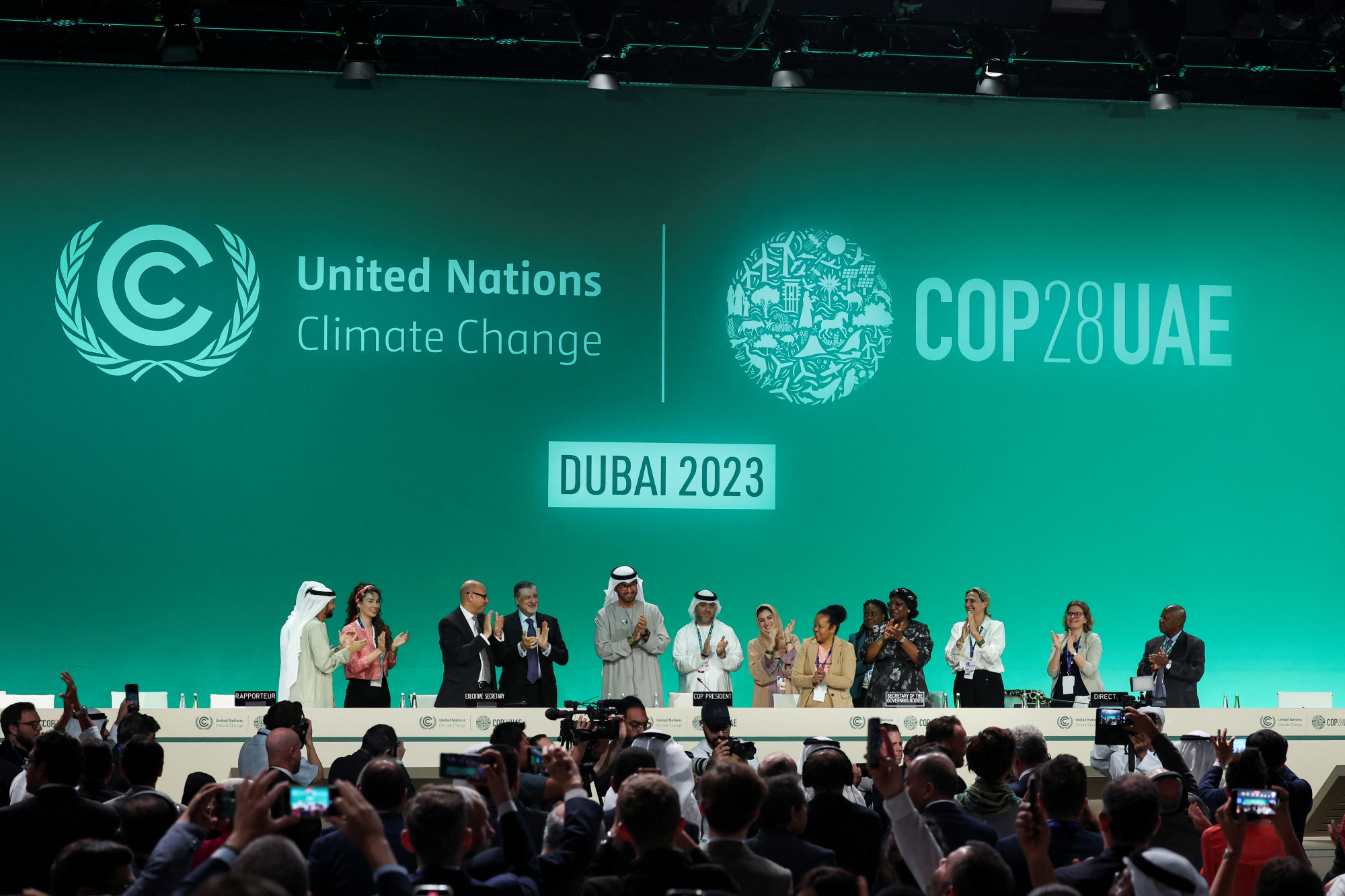
Projects involving biofuels, solar panels, green buildings, water and waste management and cogeneration especially from oil palm plantations lead the investment opportunities created by Malaysia’s green initiative.
“Most of the people that we speak to or the projects that we are involved in, do consider green technologies as an extension of the original plan if it makes economic sense,” says Swee-Kee Ng, a partner with Shearn Delamore & Co. “Some are related to the supplementary development of clean power or steam supply through the recovery of heat generated during manufacturing processes.”
With 2,700 government-supported green energy projects in the pipeline, 536 megawatts (MW) of renewable energy is expected to get connected to the grid by June 2015. In addition to grant and tax benefits, the confidence of investors in the business environment in Malaysia has also helped.
"A recent World Bank report ranking countries on the ease of doing business has placed us well, comparable to even Singapore, when historically this was not always the case,” says Audrey Choo, partner at Skrine in Kuala Lumpur, “and our government has been successful to an extent in pooling foreign investment for green projects and free technology.”
Foreign investment
5N Plus, a high purity metal manufacturer from Canada, First Solar Inc from the U.S. and the Hanwha Q-Cells Group of South Korea are among the prominent foreign investors in Malaysia’s green technology industry. American, European and Australian companies have led these projects and added to their CSR activities, says Choo. “Our firm acted for a major foreign energy company in one of its solar panels rural electrification project,” she says.
Organisations such as United Nations Development Programme have also contributed with their expertise, while working together with other stakeholders involved in Malaysia’s green projects. “All these things make Malaysia an interesting place for companies who want to lessen their carbon footprints,” says Choo.
Law firm opportunities
Law firms have benefited directly from the boom in green technology business. “Projects must have environmental impact studies done before they can go ahead,” says Choo, “We advise clients on the business environment, relevant laws and regulations, and also help them in obtaining various licences.”
Recently, Skrine acted for a client investing in Malaysia’s palm plantations where the fruits are used to generate fertilisers and the steam is sold as Certified Emission Reductions. “We drafted the share sales and joint ventures agreements and the security documentation,” says Choo.
Lawyers are even assisting in evaluating the feasibility of the projects. “We give them an overall view on the interplay of things, and red flag the issues that might encounter problems,” says Choo, “Then they can decide if they want to go ahead or not.”
Broadly, the services provided by legal practitioners include advising on joint venture or shareholder agreements, licensing, operation and management agreements, tax law advisory and explaining the available incentive schemes, many of which can be customised.
According to Ng, the practice in environmental law is relatively young in Malaysia but is developing fast with the encouragement and initiatives of the government.
Lawyers have also been providing feedback to regulators for improving the schemes and incentives to promote the sector. “This exchange would help with the understanding of the perspective of the multinationals in relation to their investment decisions and their concerns and would assist the government in competing for and attracting foreign investments,” says Ng.
Furthermore, Ng says that, applicants are often asked to provide additional information by the Malaysian regulators. “We assist the client by providing this information and to further explain the commercial context of the project so that it helps the regulators while taking decisions.”
According to Choo, Skrine lawyers were also involved in the drafting of comprehensive water resource legislations. “When we deal with water, it is not only the federal laws but state legislations as well,” she says.
The role of lawyers usually ends once the arrangements are put into place, says Ng, unless there are new developments like further investment or where there is an assistance required in the course of the project.
Regulations
To facilitate the green initiative, Malaysia enacted the Renewable Energy Act 2011, a legislation that mandated the setting up of the Sustainable Energy Development Authority (SEDA). The Authority implements a feed-in tariff system for the distribution of renewable energy generated in the country.
The feed-in tariff scheme is supported by a renewable energy fund, which is financed through a surcharge imposed on consumer electricity bills. Up until now, $22.7 million has been disbursed from this fund.
Under the scheme, electricity generated from renewable resources like biogas, biomass, small hydropower and solar photovoltaic can be sold to power utility firms at a fixed premium price for a specified time.
This funding has helped in the installation and commercial operations of 1,427 renewable energy projects of 148 MW capacity within last two years.
Banking on its success, since last December, the annual grant for the scheme has been increased from $91 million to $190 million following the rise in the surcharge on electricity from 1 percent to 1.6 percent.
The additional money is expected to increase the amount of renewable energy feed into the grid. SEDA is also considering including wind energy in the scheme, and studies to map the wind pattern in the country have been underway since 2012.
Apart from offering grants and funds, the government also offers tax incentives under its Green Technology Financing Scheme. According to the Malaysian Investment Development Authority, tax incentives are available for companies that provide or undertake energy conservation services and generate energy using biomass, water or the sun.
By 2015, the government aims to generate 985 MW of power through renewable energy sources, which is expected to contribute 5.5 percent to Malaysia’s total electricity generation. For the planning and formulation of such policies and programmes, the central government has a separate Ministry of Energy, Green Technology and Water.
Individual states too are active in building their own green credentials and attracting investments. The government of Sarawak in East Malaysia has set up a large industrial project called the Sarawak Corridor of Renewable Energy that offers cheap electricity from nearby hydroelectric power projects.
Energy-efficient vehicles
Malaysia is also trying to boost the production of green vehicles by promoting small energy-efficient cars. In January, while unveiling the revised national automotive policy, the government announced financial assistance of $610 million to the manufacturers of such vehicles. To be provided over the next six years, this assistance will partly be in the form of grants and partly, soft loans.
The government has also allowed foreign auto manufactures to make small and energy-efficient cars in the country with additional benefits of lower taxes and an attractive investment environment. “No investment conditions, no equity conditions, no number of units you got to produce,” said Datuk Seri Mustapa Mohamed, Malaysia’s International Trade and Industry Minister, while announcing the new policy in January.
This move is likely to benefit Japanese car manufactures like Honda and Nissan who have existing operations in the country.
With this new policy, Malaysia hopes to become a manufacturing hub for energy-efficient vehicles and increase their production from the current 570,000 to 1.25 million by 2020.
Efforts will also be made to boost the exports of passenger cars from around 20,000 units last year to 250,000 units in the next six years. With the corresponding increase in the production of commercial vehicles and motorcycles, the industry is expected to create an additional 150,000 jobs in the country.
While extending the scope of the incentive in Petaling Jaya city, the local government announced a year’s free parking for new hybrid cars.
The Petaling Jaya City Council also has several other projects including compulsory green requirements for new building projects like rainwater harvesting system, use of LED lamps and landscaping of 10 to 15 percent of the total developed area. The council also offers incentives to existing households who adopt environment-friendly measures related to the efficient use of energy, water, transport, compost and biodiversity; activities usually carried out through the cultivation of a garden in the house or participation in recycling activities.
SEDA also plans to support a programme of installing solar power panels on the rooftops of 20,000 Malaysian homes.
According to Choo, the adoption of green technology helps in countering criticism about poor planning in previous urbanisation projects. Furthermore, she say that "the push to incentivise and develop the green technologies and forming part of the 12 National Key Economic Areas of Malaysian economic transformation plan is a natural part of the evolution for the country to attain developed status.”
Oil and gas
Malaysia’s growth and development is not restricted to green energy. “There continue to be investment opportunities in almost every industry sector including services, Information Technology, oil and gas, real estate development and manufacturing,” says Ng.
The production and consumption of conventional energy in Malaysia has been rising. According to the International Energy Agency (IEA), the country is the third-largest energy consumer and second-largest crude oil producer in the Association of Southeast Asian Nations. Also, the country’s annual energy demand is increasing by 2.3, while the population and GDP have been rising annually by 1.2 percent and 4 percent respectively.
Malaysia has 2.4 trillion cubic metres of proven natural gas reserves and according to IEA, by 2020, the country’s gas production is expected to rise to 70 billion cubic metres (bpd), most of which would be exported.
Malaysia’ crude oil supply is also projected to rise to 740,000 barrels per day (bpd) in the short term compared with 670,000 bpd recorded last year. There are four billion barrels of proven oil reserves in the country.
In April 2013, the $920 million Sungai Udang regasification terminal, with the maximum annual capacity of 3.8 million tonnes of Liquefied Natural Gas was commissioned in Malacca. Most of its output is expected to be used for power generation. Another regasification plant in Lahad Datu in Sabah is also in the pipeline.
In 2013, a new oil and gas field was discovered onshore, 20 kilometres off Miri towards the east of the country.
Furthermore, Malaysia’s national oil company, Petronas, will be starting several new projects in the near future. The Sabah Ammonia Urea Project in Sipitang, an integrated oil and gas production development project in Kebabangan and a refining and petrochemical integrated development in Pengerang in Johor are major developments.
The Kebabangan project is expected to be ready by 2017 and once that happens, the company’s storage capacity will double to seven million tonnes.
There are some more ventures in the offing which include the $3 billion enhanced oil recovery project at the Tapis oil fields located offshore at Terengganu which is expected to increase Tapis’ daily production from 3,000 to 35,000 barrels. The project has been jointly undertaken by ExxonMobil Exploration, Production Malaysia Inc, Petronas Carigali Sdn Bhd and Petronas.
Two other projects awarded by Petronas include a $3 billion integrated hook-up and commissioning and major maintenance contract to PBJV Sdn Bhd, TL Offshore Sdn Bhd and GOM Resources Sdn Bhd. Production sharing contracts for PM322 block in the Straits of Malacca have also been awarded to Petronas Carigali Sdn Bhd and Salamander Energy Malaysia Ltd. These, along with other projects, are expected to increase Malaysia’s oil production from deep-water projects and reverse the trend of the country’s falling oil output.
Follow us on Twitter: @ALB_Magazine.

 management and cogeneration especially from oil palm plantations lead the investment opportunities created by Malaysia’s green initiative.
management and cogeneration especially from oil palm plantations lead the investment opportunities created by Malaysia’s green initiative.


